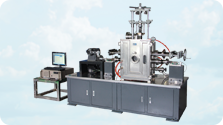

Hard alloy wear-resistant parts are composed of a matrix, a hard alloy layer, and a copper based solder bonding layer in the middle. This type of hard alloy wear-resistant component uses copper based brazing material to heat and bond the parent body and hard alloy layer. The manufacturing method is simple and feasible, and the wear-resistant component that has been worn is remanufactured using surfacing welding technology, which can achieve more wear-resistant performance than the original casting. At the same time, through waste utilization, circular economy can be achieved, which is a remanufacturing process. Hardfacing and casting are both manufacturing methods for wear-resistant parts. The manufacturing of wear-resistant parts is mainly based on casting (in terms of tonnage), and the proportion of hardfacing parts is relatively small. Casting developed earlier than overlay welding, so since the birth of overlay welding, there has been a question of who replaces whom in casting and welding (overlay welding). In fact, in principle, the two should be one and cannot be replaced by each other. We believe that the surfacing process is actually a microscopic casting process. If casting can be seen as a large-sized molten pool with dimensions in meters, then surfacing is a very small molten pool in millimeters.
In wear-resistant cast iron materials, expensive alloy elements (such as molybdenum, nickel, copper, etc.) are usually added to improve the service life of castings, which greatly increases production costs. Research has shown that boron can improve the depth and uniformity of the quenching layer of materials, and can replace (or partially replace) the role of expensive alloy elements such as molybdenum and nickel. The wear-resistant tooth root produced by using boron containing pig iron or boron iron alloy has little difference in wear resistance between the inner and outer layers. While ensuring and extending the product's service life, it can also reduce the addition of expensive alloy elements such as molybdenum and nickel, and reduce production costs. Low alloy boron containing wear-resistant tooth root: The product index is: hardness HRC=45-52, and the number of ball drops ≥ 8000 times. The product specifications are: Φ 50~ Φ 140. In the production of low alloy boron containing wear-resistant tooth roots, using reasonable boxing time and certain insulation measures can save the heat treatment process of casting balls. Boron containing high chromium alloy cast iron wear-resistant tooth root: Use boron containing pig iron or boron iron alloy to partially replace molybdenum and nickel in high chromium white cast iron to produce excavator wear-resistant tooth root. Performance indicators: hardness HRC=56~66 (heat treatment), impact toughness ak=5.5~6.0 J/cm2. Boron containing high chromium white wear-resistant tooth root: In the research project, boron containing pig iron or boron iron alloy is used to partially (or completely) replace molybdenum and nickel in high chromium white wear-resistant cast iron to produce wear-resistant driving teeth for excavators. Strive to achieve performance indicators: hardness HRC ≥ 56 (heat treatment), impact toughness ak ≥ 10 J/cm2. In short, using boron containing pig iron or boron iron alloy to produce wear-resistant parts not only reduces the production cost of castings, but also continues the comprehensive utilization of boron iron ore. It has good economic benefits and important technical value.





